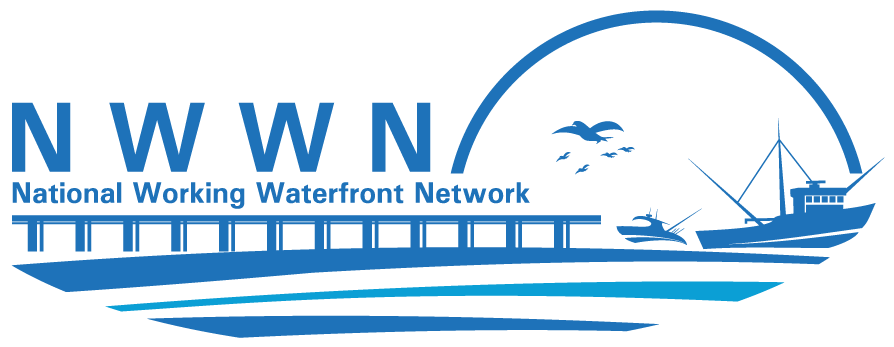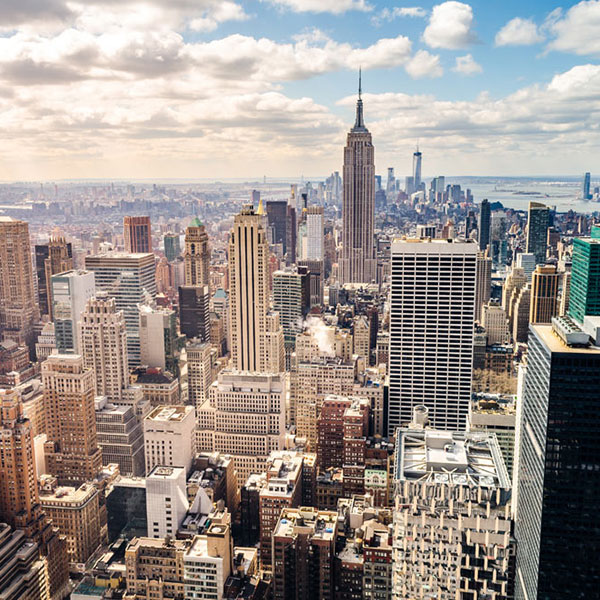Case Study
Metropolitan Waterfront Alliance
Location
New York New Jersey Harbor
Timeframe
2007-present
Summary
The Metropolitan Waterfront Alliance is an alliance of more than 700 organizations with ties to the waterways of New York and New Jersey. Together they are working to transform the waters of New York and New Jersey Harbor into clean and accessible places to learn, work and play. Metropolitan Waterfront Alliance is at the forefront of the movement to acknowledge, revitalize and redevelop this precious resource. The MWA has used Task Forces—where ferry captains and environmentalists learn the language of urban planners, and kayakers debate shipping executives—to develop comprehensive advocacy heeded by policy-makers and government agencies. With environmental justice and sustainability now buzzwords in harbor projects, the MWA continues to call for greater public access to the 700 miles of regional waterfront and better support of the area’s $9 billion maritime industry. With climate change and rising sea levels, planners, scientists and architects must re-imagine the shoreline, while expansion of global shipping activity demands updated infrastructure to maintain the port’s preeminent international reputation.
Transferability
The MWA’s collaborative approach of building a regional, multi-state coalition of broad-based partnerships to address a variety of waterfront and harbor-related activities, including economic development, environmental protection and enhanced access to the NY and NJ harbor is an approach that is transferable to other communities. This community-organizing approach to building consensus around broad harbor-related goals at the regional scale is also transferrable to other communities.
Best Practices
The MWA takes a community organizing approach to building and leveraging a broad-based partnership to support a variety of waterfront and harbor related activities. Director Roland Lewis has a background in community-organizing and was formerly the Executive Director of Habitat for Humanity NYC. The MWA bills itself as a forum where diverse and occasionally competing interests collaborate to create proposals for the future of New York Harbor and its network of waterways. Thanks to the work of MWA’s partners, more children understand their harbor heritage, more people are learning to sail, less sewage flows into the waterways, more ferries traverse the rivers, and more politicians discuss smart redevelopment of the waterfront.
In addition, the Task Forces convened by MWA take on the tasks of defining needs, synthesizing various agendas, prioritizing land-use proposals, and developing a comprehensive vision for the New York-New Jersey waterfront. Comprised of scientists, engineers, urban planners, community advocates, government workers, boat captains, and others, the Task Forces represent a diverse group of stakeholders associated with NY/NJ waterways. MWA’s Task Forces focused on Waterfront Design & Architecture, Green Harbor, Harbor Education, Harbor Recreation, and the Working Waterfront have been active since 2007 and continue to move forward on a variety of critical agenda items. The Working Waterfront Task Force developed a white paper which provides background and recommendations related to maintaining the harbor’s working waterfronts. These recommendations are incorporated into MWA’s Waterfront Action Agenda, a comprehensive strategy designed to enhance the New York- New Jersey metropolitan waterfront.
In 2010 and 2011 the Alliance’s six Task Forces drafted recommendations for a new New York City Comprehensive Waterfront Plan that was feasible and reflected the needs and aspirations of the people of the City of New York. MWA worked with New York City Department of City Planning, MWA Task Forces, and our Alliance Partners to ensure a robust input process led to implementable recommendations for the New York City Comprehensive Waterfront Plan. MWA held over 10 task force meetings regarding the Plan and assisted the City in their Borough Workshops.
Full Case Study Description
History
The Metropolitan Waterfront Alliance is a nonprofit organization that works to influence the development and use of the waterfront, shoreline, and connected upland areas of northern New Jersey and New York City as well as other areas of the New York City metropolitan region. The Metropolitan Waterfront Alliance was founded by the Municipal Art Society in 2000. The Municipal Art Society is a nonprofit membership organization that promotes urban planning, design and preservation through education, dialogue and advocacy in New York City. In 2007, the Metropolitan Waterfront Alliance emerged as a separate nonprofit organization from the Municipal Art Society.
Actions Taken
During 2008, the Metropolitan Waterfront Alliance, policy makers, activists, planners, and agency representatives developed an agenda of policy changes and projects for the waterfront. The Waterfront Action Agenda was released in November 2008 at the MWA’s Waterfront Conference. Also in 2008, MWA helped to simplify the permitting process for waterfront projects in the NY-NJ Harbor by creating a “Waterfront Permitting Made Simple” website. In 2009 and 2010, MWA worked with the City of New York to develop and execute a public input process for the update of the Comprehensive Waterfront Plan. The Plan was released by the NYC Department of City Planning in 2011 as Mayor Bloomberg’s Vision 2020: New York City Comprehensive Waterfront Plan.
In 2010, Metropolitan Waterfront Alliance joined with the National Parks Conservation Association to create the New York-New Jersey Harbor Coalition. This bi-state coalition of nonprofit organizations is an advocacy campaign to help secure the federal and state funding needed to transform the NY-NJ Harbor to meet the environmental, recreational, and economic needs of the region’s 22 million residents. MWA also began the Open Waters Initiative in 2010 as a program to construct community docks at waterfront sites in New York City.
Approaches Used
The MWA uses a combination of approaches to fulfill their mission related to working waterfront issues. These include activities related to raising awareness of the harbor and its importance of working waterfront industries, increasing communication around waterfront issues, promoting waterfront design that accommodates working waterfronts and other uses, the introduction of community docks to provide space for educational and tall ships, and promoting ferries as viable commuting options. In addition, the MWA Working Waterfront Task Force provides a forum for defining needs, raising awareness, and developing a comprehensive vision for the New York-New Jersey waterfront.
Waterfront Communications
MWA’s communications program has established MWA as an authoritative voice on waterfront issues and a reliable source of information for everyone, from the highest levels of government to the smallest neighborhood groups. MWA reaches thousands of active waterfront-inspired organizations, individuals, and leaders through its effective and popular communication tools. These include the bi-weekly electronic newsletter, WaterWire; MWA’s website featuring important information about the waterfront and the Waterfront Action Agenda; and a semiannual printed newsletter. MWA also conducts in-depth research that affects and creates new policy, and which is available as documents, publications, and white papers on the website.
City of Water Day
City of Water Day is a unique and high-profile annual event that focuses wide-scale public attention on the challenges and opportunities facing the NY/NJ waterfront and highlights solutions. This free, daylong festival on Governors Island and in Liberty State Park inspires people with the vision of a world-class regional waterfront. MWA accomplishes this through waterfront fun, entertainment, and recreation, as well as dialogue, hands-on learning, and civic engagement, in a way not replicated at any other Harbor event in the region. In 2012, 25,000 people participated in the Festival and hundreds of thousands learned of the event and the potential of the waterfront through extensive media coverage.
Harbor Camp
Harbor Camp is a unique water-based summer camp that introduces low-income school age children to New York City’s Harbor and waterways. Each summer, MWA provides an average of 20 no-cost, on-water, or water-focused field trips to children from local schools, most often on historic and educational vessels. The trips provide hands-on ecological, environmental, maritime, and historical education, and cultivate an attitude of stewardship in participants. In 2011, more than 1,100 children from local schools participated in Harbor Camp, an experience that will seed their commitment as adults to shape, protect, and develop the waterfront for future generations.
Design the Edge
Design the Edge is a collaborative venture to make innovative waterfront design a standard in all waterfront projects. Big box stores, large condominiums, bulky sea walls, or poorly designed promenades and waterfront parks can limit other uses and have significant ecological impact. By gathering landscape architects, marine engineers, marine biologists, and environmental artists, MWA’s Design the Edge program challenges traditional paradigms of waterfront design and has initiated projects to transform New York City’s many shorelines that are poorly planned for optimal use. MWA worked in 2010 to ensure the principle of Design the Edge would be included in the New York City Comprehensive Waterfront Plan.
In early 2015, the MWA created Waterfront Edge Design Guidelines (WEDG), a tool and scorecard for creating resilient, accessible waterfronts around New York Harbor. The WEDG rating system promotes waterfront projects that incorporate resilience, access, and habitat improvements within the site selection, planning, and design process. For more information, see www.waterfrontalliance.org/WEDG.
The Open Waters Initiative
MWA’s Open Waters Initiative will bring Community Eco Docks to waterfronts throughout the five boroughs, unlocking the region’s waterfront and allowing human-powered boats, historic and educational vessels, tall ships, and other vessels to visit these once land-locked waterfront communities. These floating docks are flexibility, cost-effective, and include potential environmental and economic benefits make them almost universally approved by City agencies and communities alike. In 2010 and 2011, MWA worked extensively to begin the planning, design, and coordination of MWA’s first Community Eco Dock. MWA worked with its Alliance Partners and user groups to ensure that the dock is a success—broadly embraced and utilized by the community—and serves as the model and catalyst for subsequent docks throughout the region.
Ferry Transit Program
With the 2013 launch of the new Ferry Transit Program, the Metropolitan Waterfront Alliance is now the primary non-governmental advocate for expanded and enhanced ferry service in New York City. MWA has spearheaded a two-pronged advocacy strategy, engaging City Council members and public officials to facilitate policy shifts and secure future government subsidy, as well as organizing grassroots ferry campaigns in neighborhoods that could benefit from ferry service.
Working Waterfront Task Force
The Working Waterfront Task force developed a white paper which provides background and recommendations related to maintaining the harbor’s working waterfronts. These recommendations are incorporated into MWA’s Waterfront Action Agenda, a comprehensive strategy designed to enhance the New York- New Jersey metropolitan waterfront.
Next Steps
The MWA continues to conduct research, publish influential reports and produce well-attended conferences. As MWA helps people understand the multi-layered significance of the NY/NJ waterfront, the job has expanded to include crucial advocacy for funding and implementation. Over the next several years, MWA will lobby elected officials for New York Harbor’s fair share of government dollars, work to streamline the waterfront permitting process, and track progress on waterfront initiatives by holding stakeholders accountable to benchmarks.
Key Partners
- The Trust for Public Land
- Habitat for Humanity
- NY City Audubon
- ROW NYC
- NYC Water Trail Association
- NYC Kayaker
- Scenic Hudson
- National Parks Conservation Association
- NY Shipping Association
- New YorkY Industrial Retention Network
- NY/NJ/CT Regional Plan Association
- City of NY
Contacts
Roland Lewis, Metropolitan Waterfront Alliance. rlewis@waterfrontalliance.org
Additional Information
Waterfront Alliance Media (http://www.waterfrontalliance.org/media)
Waterfront Edge Design Challenge (www.waterfrontalliance.org/WEDG)
References
http://www.waterfrontalliance.org/
http://www.waterfrontalliance.org/media/waterwirearchive
http://www.waterfrontalliance.org/media
Last updated 19-Aug-15


